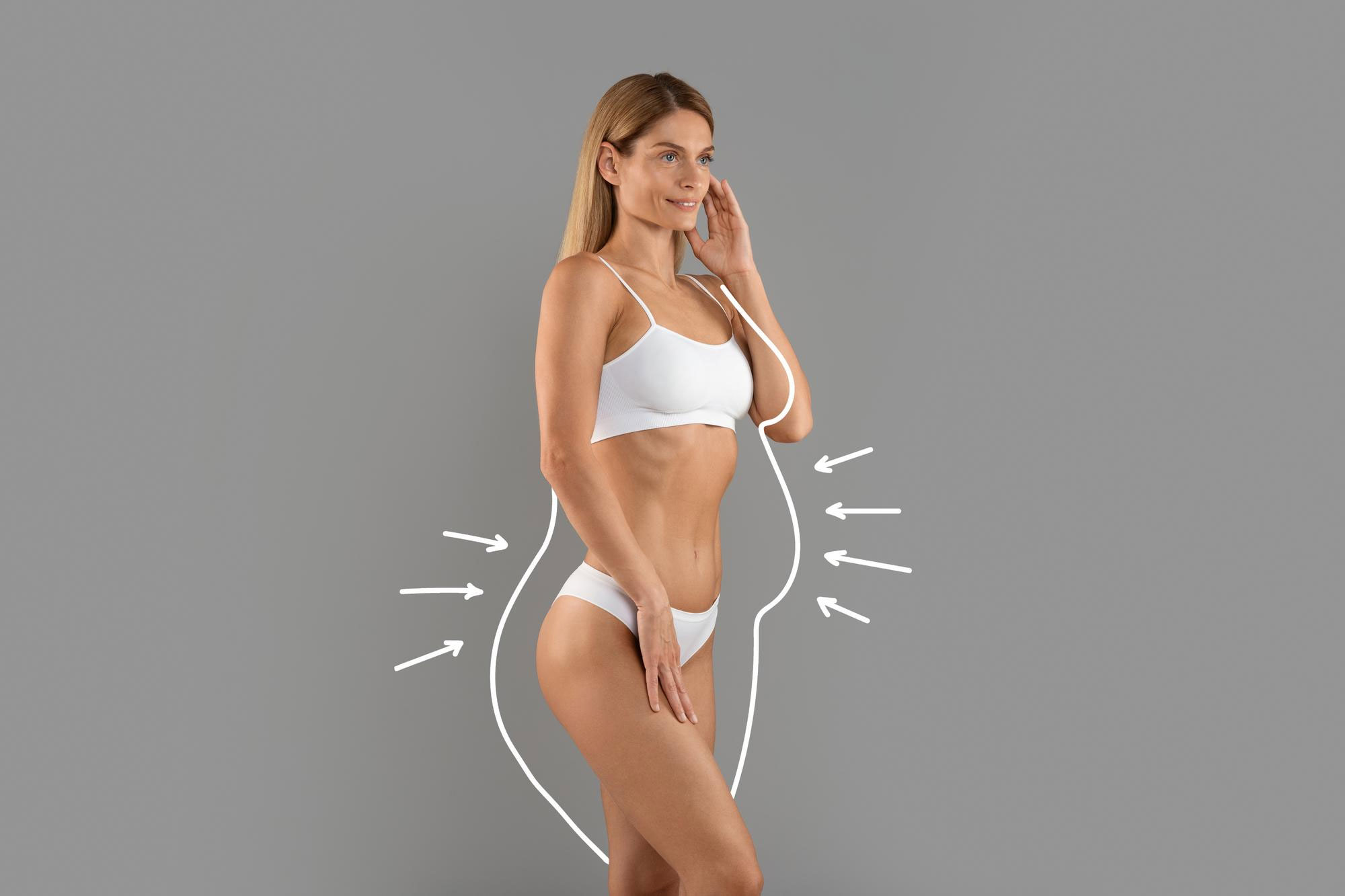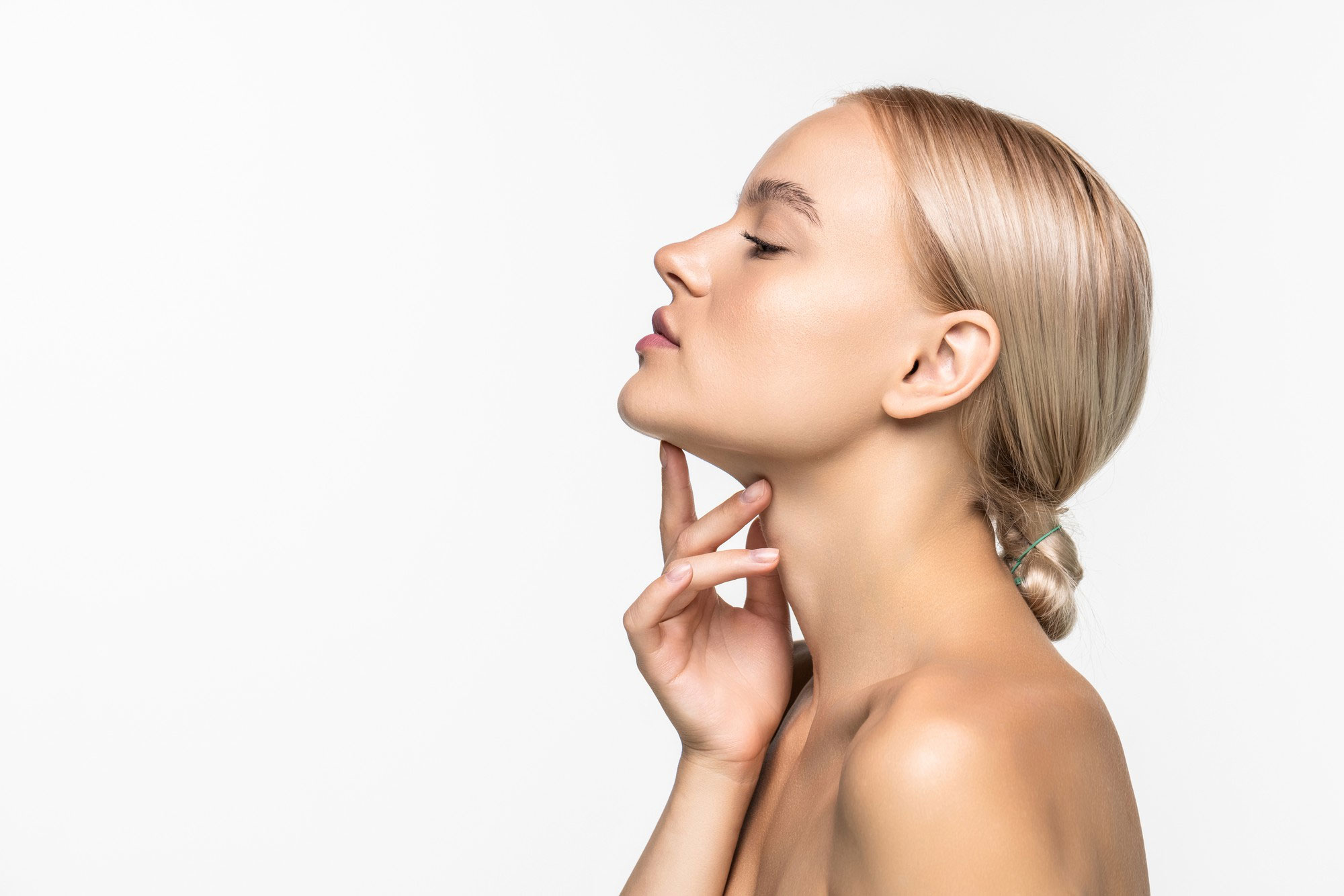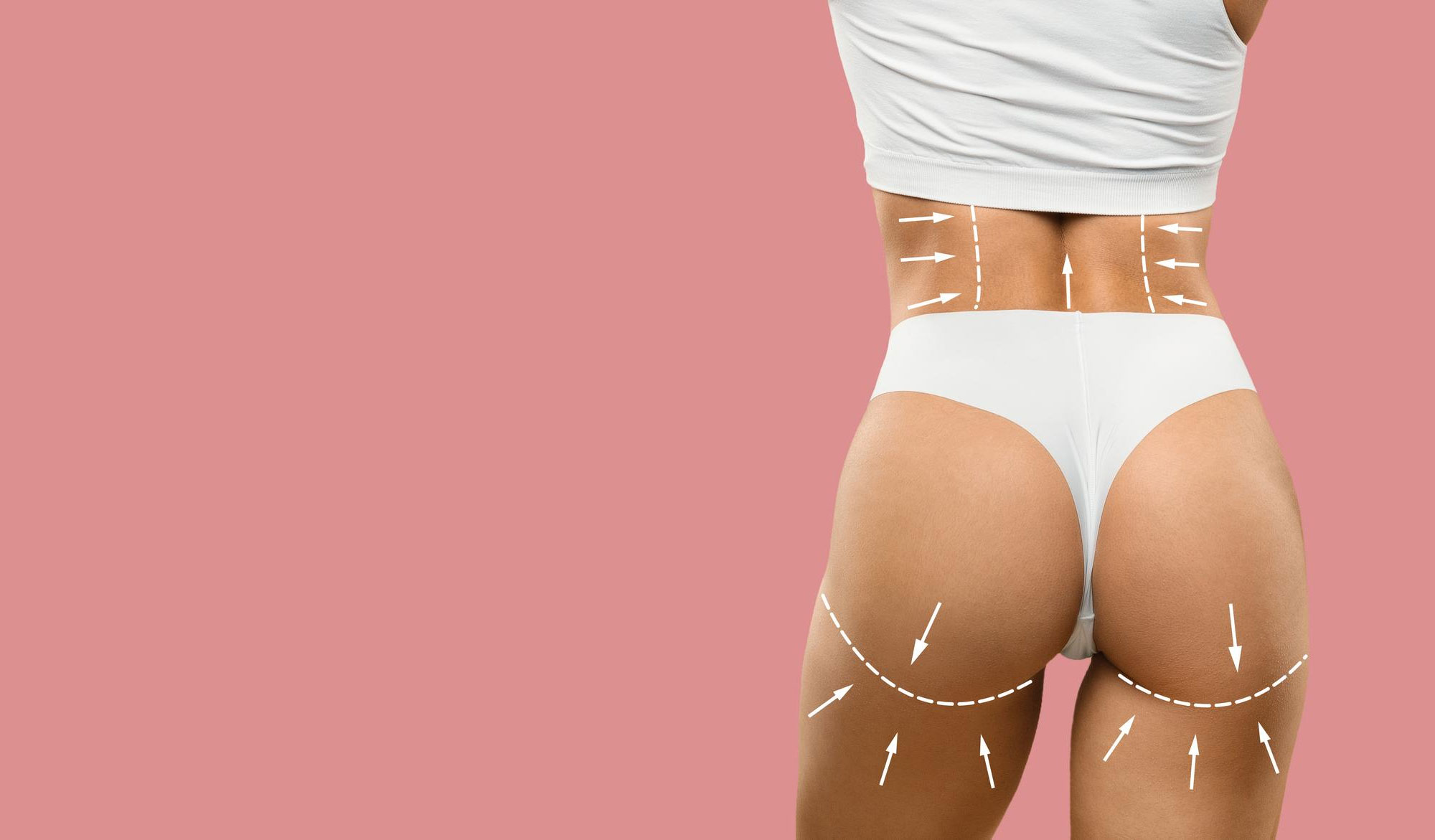What Exactly Is Blepharoplasty?
Blepharoplasty, in its simplest terms, is the removal or reshaping of excess skin, muscle or fatty tissue in the upper and/or lower eyelids. This surgical method not only corrects sagging or bagging around the eyes, but can also be applied to eliminate visual field restrictions, if any.
To explain this surgery with an analogy from daily life, imagine a curtain that is getting old and starting to sag. Depending on time or some external factors, this curtain starts to look not as smooth as before, preventing you from watching the image clearly. Eyelid surgery, on the other hand, is similar to renewing or re-correcting the curtain. The excess fabric (skin) and the sagging mechanism (muscle and connective tissue) are recovered and regain their original function, which is to provide a clear gaze and aesthetic appearance.
In which cases is blepharoplasty preferred?
Blepharoplasty is performed when there is significant sagging, bagging, fat herniation, excess skin or muscle relaxation around the eyes. The reasons why this surgery is preferred can be grouped under two main headings:
Aesthetic Reasons
Over time, the eyelids may start to sag downwards as a result of the skin losing its elasticity. In addition, the fatty tissue in the lower eyelid may shift or become prominent. When a person looks in the mirror, they may feel tired or older all the time. This can affect self-confidence and cause problems in social life. Blepharoplasty for aesthetic purposes is preferred to give a fresher and more vibrant expression to the tired-looking eye contour.
Functional Causes
Excess skin or fatty tissue sometimes narrows the visual field. For example, when reading the newspaper or watching television, the person may be disturbed by the feeling of heaviness in the upper eyelid. In fact, this sagging may be so severe that the person has to look up by lifting his/her head upwards. In such cases, blepharoplasty surgery improves the visual field and provides relief around the eyes.
In some patients, the lower eyelid may turn inward (entropion) or outward (ectropion). These conditions negatively affect the position of the tear ducts and eye health. It causes complaints such as pain, watering or dryness. Blepharoplasty corrects these deformities and protects eye health.
How Does the Surgical Process Develop?
The preparation phase of blepharoplasty surgery is as important as the surgery itself. Usually the first step is a detailed examination and analysis of the eye contour. Here, the patient's skin elasticity, eyelid shape, muscle structure and the physical health of the eyes are examined. If there is any dryness in the eyes, infection or eye pressure, these should be treated or controlled first.
Surgery Planning and Preparation
Anatomical Assessment: The physician determines the amount of sagging in the upper eyelid, fat herniation and excess skin in the lower eyelid. The tone of the muscles around the eye and the angle of contact of the eyelid with the cornea are also evaluated.
Photography: Detailed photographs are taken to compare before and after the surgery. These images are very useful when evaluating the patient's results after surgery.
Choice of Anesthesia: Blepharoplasty can often be performed with local anesthesia and mild sedation. However, general anesthesia can also be applied depending on the person's preference or the extent of the surgery.
Generally, the duration of this procedure can vary between 1 and 3 hours depending on the size of the intervention. If only the upper eyelid is intervened, the procedure takes a shorter time, while if both the upper and lower eyelids are to be intervened, the duration is slightly longer.
What is done during blepharoplasty?
Blepharoplasty targets two different areas, the upper and lower eyelids. If the person only has a problem with the upper lid, the lower lid does not need to be intervened. Most of the time, however, both lids are addressed for a more holistic rejuvenation.
Upper Eyelid Blepharoplasty
In upper eyelid surgery, an incision is made at the natural fold line. Through this incision, excess skin, if necessary, excess muscle tissue and sometimes fat tissue are removed or reshaped. Thus, the eyelid becomes more taut and open. At the end of the surgery, the scars are not visibly evident as the sutures usually remain in this fold area.
Lower Eyelid Blepharoplasty
There are generally two different approaches to lower eyelid surgery. If there is severe excess skin, a subciliary incision is made just below the eyelashes to remove the excess skin and, if necessary, to correct the distribution of fatty tissue. However, if the excess skin is minimal and the main problem is fat herniation, an incision is made on the inside of the eyelid (transconjunctival) and only the fat tissue is intervened. Thus, there is no visible scar from the outside.
The lower lid often plays a key role in eliminating under-eye bagging. These bags can sometimes make a person feel "late at night, tired" or "old". With blepharoplasty, these fat pads are repositioned or partially removed to provide a smoother transition.
The aim is not always to remove excess tissue but to achieve the right balance. Excessive tissue removal may cause the eyes to look sunken and expressionless; insufficient removal does not give a satisfactory result. Therefore, preoperative planning greatly affects the success of the surgery.
How Does the Postoperative Recovery Process Proceed?
One of the most curious issues after blepharoplasty is how long it takes to complete the recovery and when the person can return to their daily life. Although this time varies according to individual factors and the extent of the surgery, the following stages are usually followed:
First few days: Swelling and bruising around the eyes after surgery is quite natural. Although this picture sometimes worries the patient, it is often an expected and even desirable sign of recovery. During this period, applying cold compresses and avoiding activities that tire the eyes (for example, staying in front of the screen for a long time) provide relief.
First Week Stitches can be removed within a few days or, if self- dissolving stitches were used, healing continues rapidly. The pain is usually mild and can be controlled with simple painkillers.
Second Week Bruising and swelling are greatly reduced; the person can usually return to their social life. However, it may be necessary to wait a little longer to apply eye makeup, engage in intense physical activities or direct sun exposure.
First Month and After: At the end of approximately 1 month, the swelling around the eye area will have disappeared significantly. In this process, supportive applications such as massaging the eye area, using moisturizers or sunscreen products can be done in line with the physician's recommendations. It may take up to 3 months for the final results to fully settle.
During this recovery period, it is important to rest the eyes frequently during the day, use artificial tear drops if necessary and avoid intense sports. Just like watering and protecting a plant regularly, taking care of the surgical area ensures a healthy result.
Who is Blepharoplasty Suitable for?
Blepharoplasty surgery can be an option for almost anyone who suffers from eyelid drooping, bagging or dysfunction (e.g. narrowed field of vision). However, some criteria make the decision for surgery clearer:
Physical Health: The general health of the person should be at a level that can tolerate the surgery. For example, uncontrolled hypertension, diabetes or the use of blood thinners may increase the risk of surgery.
Eye Health: For those with eye conditions such as dry eye, eye pressure, corneal problems, the situation is evaluated in detail. If necessary, an additional report or permission of the ophthalmologist is requested.
Psychological Status: It is very important that expectations are realistic. Unrealistic goals such as "My wrinkles will disappear completely, I will be 20 years younger" may lead to postoperative dissatisfaction. After the surgery, the eye area is expected to look more vigorous, more 'recovered', but this does not mean that the person will suddenly return to his/her 20s.
Age Factor: Blepharoplasty is mostly performed in individuals over the age of 35. However, it can also be performed at an earlier age in people who experience eyelid sagging or bagging at an earlier age due to genetic reasons.
It is possible to think of suitable candidates for this surgery with the example of a home renovation: If there is serious damage to the roof of the house, repairs are inevitable. But if there is only a small crack in the roof and it is not yet causing a problem, it may make sense to wait for repair. Likewise, if the problem in the eyelid does not affect daily life, surgery may remain an option.
Are There Risks During and After Surgery?
As with any surgical procedure, blepharoplasty carries certain risks. However, these risks are generally low and can be further reduced with the right patient selection and experienced surgeon intervention.
Infection: It is rare when basic hygiene rules are followed. Careful postoperative wound care and the use of medications recommended by the doctor minimize the risk of infection.
Bleeding: A hematoma (accumulation of blood) may develop around the eye, although this is unlikely. It is characterized by swelling, pain and bruising. In such a case, medical intervention may be required.
Dryness or Irritation: Stinging, burning or dryness in the eyes may occur in the first few days after surgery. Artificial tear drops usually alleviate this problem.
Change in Eyelid Shape (Ectropion, Entropion): Although very rare, the eyelid may turn outward or inward. Additional surgical interventions may be required to correct this condition.
Asymmetry and Scars: Although the surgeon makes incisions along the natural fold lines, tissue healing varies from person to person. In some people, scars may remain more prominent or slight asymmetry may occur between the eyelids.
In order to minimize the risks, it is necessary to follow the recommendations before and after surgery and not to interrupt postoperative controls. Sometimes a small problem can be eliminated before it grows with early intervention.
What are the Benefits of Blepharoplasty?
The biggest benefit of blepharoplasty is a visible rejuvenation and relaxation around the eyes. However, it has many advantages beyond this:
More Vibrant and Vigorous Eyes
Excess skin accumulated over the years on the eyelids makes the gaze look more tired and drooping than it actually is. After the surgery, the eye area tightens and the person looks more energetic.
Improvement of the Visual Field
A drooping upper eyelid can narrow the field of vision. This is especially noticeable when driving, reading or looking up. By removing excess skin, the field of vision widens and the person feels more comfortable.
Easier Makeup Application
If there is severe sagging of the upper eyelid, it can become difficult to apply eye makeup. Thanks to the eyelid line that becomes more prominent after blepharoplasty, it is much easier to apply makeup or shape the eyelids.
Increased Self-Confidence
The individual who sees himself more vigorous and happy when he looks in the mirror usually feels more comfortable in social life. Considering how effective the gaze is in human relations, a surgery that refreshes the eye area can have positive psychological effects.
Can Glasses or Lens Wearers Have Blepharoplasty?
The use of lenses or glasses does not directly prevent this surgery. However, details such as whether the eyes are dry or not, daily or long-term use of lenses are taken into consideration during the surgery planning. Lens use may need to be suspended for the first few weeks after surgery. The use of glasses, on the other hand, does not cause a problem most of the time as long as it does not put pressure on the stitches.
Is Blepharoplasty Permanent?
Excess skin or fat tissue removed by surgery is not replaced; however, it should not be forgotten that time does not stop. As the aging process continues, some changes in the eye area may reappear in the coming years. In general, the results are considered long-lasting and for most patients, a one-time operation provides long-term comfort.
Is Filler or Botox Preferred Instead of Surgery?
Botox or filler procedures can give satisfactory results for wrinkles and mild sagging around the eyes; however, these methods are insufficient if there is significant excess skin, fat bags or severe sagging. Generally, non-surgical methods cannot completely replace surgery. Nevertheless, non-surgical applications can be used in the postoperative period to remove wrinkles or to support the results.






























